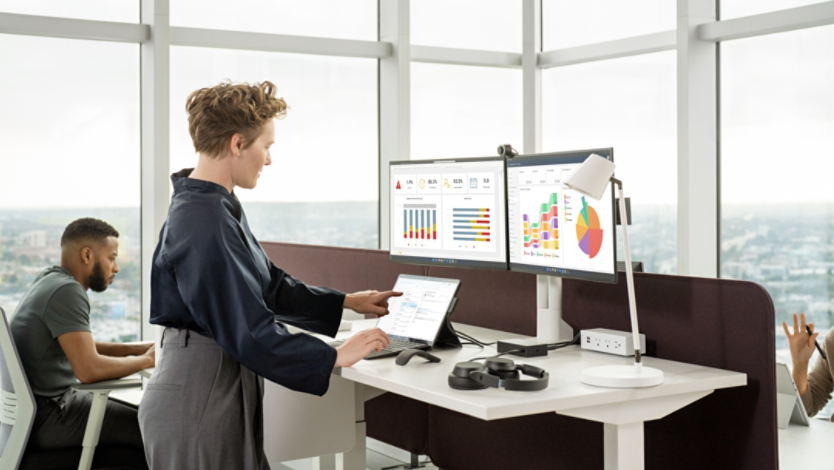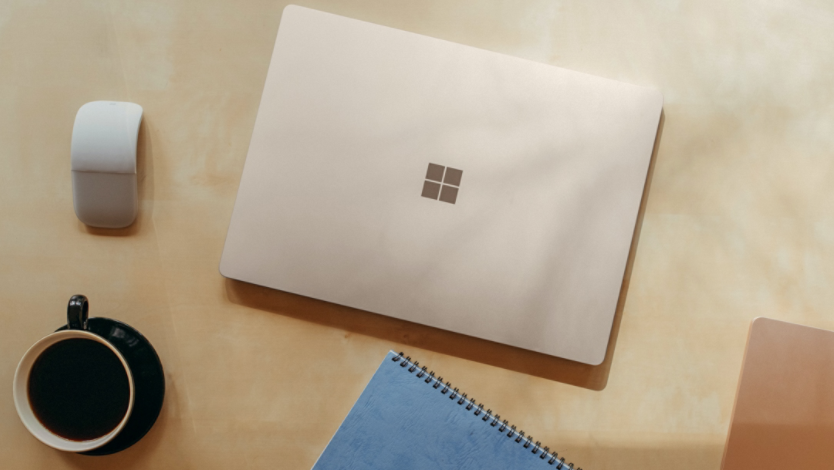
January 23, 2025
How to keep your laptop cool
Like any electronic device, a laptop can overheat if not properly cared for, so it’s important to keep it cool. Overheating can lead to challenges, including reduced performance, decreased battery life, and potential hardware damage. In this article, we'll delve into practical tips to keep your laptop cool and running optimally.
Signs and consequences of overheating
If you notice any of the following signs, your laptop might be overheating. It’s a good idea to turn off your laptop, move it to a cooler place, and let it cool down for a while:
- Laptop feels hot: A laptop becomes noticeably hot to the touch, especially on the back.
- Thermometer icon: A thermometer icon appears on the screen, indicating that the device has exceeded its safe operating temperature.
- Fan noise: The fan runs loudly and continuously as it tries to cool down the device.
- Performance issues: Your laptop might lag, freeze, or experience other performance issues.
- Battery drain: The battery drains more quickly than usual.
- Screen flickering: The screen may flicker or display strange artifacts.
Overheating can have consequences for your laptop:
- Performance degradation: Overheating can cause your laptop to throttle its performance, leading to sluggishness and slow response times.
- Battery health: Excessive heat can accelerate battery degradation, reducing its capacity and lifespan.
- Hardware damage: Prolonged exposure to high temperatures can damage internal components, such as the processor and storage drive.
Practical tips to keep your laptop cool
These practical tips can help keep your laptop cool and help ensure it runs smoothly for years to come. Whether it's optimizing your software settings, adjusting your hardware setup, or simply being mindful of your usage habits, these strategies can make a noticeable difference in keeping your laptop cool and efficient.
Create an optimal environment
Create an optimal environment for your laptop by considering these factors:
- Ventilation: Ensure your laptop is placed on a hard, flat surface with ample airflow. Avoid soft surfaces like beds or couches that can block ventilation.
- Avoid extreme temperatures: Keep your laptop away from direct sunlight and heat sources.
Optimize software
Optimizing software can help reduce heat generation:
- Background apps: Close unnecessary background apps to reduce CPU load.
- Power plan: Adjust your power plan to balance performance and power consumption. A balanced power plan is often a good choice.
- Screen brightness: Lower the screen brightness, when possible, to reduce power consumption and heat generation.
- Regular updates: Keep the operating system and drivers up to date to benefit from performance optimizations and bug fixes.

AI art created via Copilot
Consider hardware
Investing in additional hardware can help keep your laptop cool:
- Laptop stands: Elevating your laptop can improve airflow and prevent heat buildup.
- External peripherals: For demanding tasks like video editing or gaming, consider accessories like external monitors, keyboards, and mice to reduce the workload on internal components of your laptop.
- Cooling pads: Invest in a cooling pad designed for laptops. Cooling pads can significantly lower the temperature of your laptop by providing additional airflow.
Plan for regular maintenance
Regular maintenance can help keep your laptop cool and running smoothly.
- Cleaning: Regularly clean the vents and keyboard of your laptop to remove dust and debris that can hinder airflow. Use compressed air to gently blow out the dust.
- Battery care: Overcharging can stress the battery and generate excess heat. Maintain the health of your laptop battery by letting the battery drain below 50% before charging it and avoid keeping your laptop plugged in 24/7. Avoid letting the battery drain completely or reach 100% too often.
Practice mindful usage habits
Your usage habits can impact the temperature of your laptop. Here are a few suggestions:
- Task management: Break down demanding tasks into smaller, less resource-intensive chunks to avoid prolonged periods of high CPU usage.
- Take a break or two: Give your laptop regular breaks to cool down, especially after extended periods of heavy use.
- Proper location: Keep your laptop in a cool, dry room when you're not using it.
Monitor the temperature of your laptop
Monitoring the temperature of your laptop allows you to identify potential overheating issues.
- Built-in tools: Use Windows Task Manager to monitor CPU and GPU temperatures.
- Third-party apps: Consider using third-party temperature monitoring apps for more detailed information.
Additional tips beyond cooling
Beyond cooling, these additional tips can help optimize the overall performance of your laptop.
- Ask a pro: If you notice persistent overheating or unusual behavior, consult a qualified technician.
- Optimize storage: Regularly clean up disk storage to improve performance and free up space.
- Use high-quality accessories: Invest in high-quality accessories, such as chargers and cables, to ensure optimal performance and avoid overheating issues.
- Regularly update firmware: Keep your firmware up to date to ensure optimal performance and security.
Avoid extreme cold too
In addition to extreme heat, avoid very cold temperatures. Extreme heat and cold can impact your laptop. To ensure optimal performance, avoid exposing your laptop to sudden temperature changes. Rapid fluctuations can stress the components.
When traveling in cold weather, consider carrying your laptop in a protective case to shield it from extreme temperatures. Prolonged exposure to high temperatures can lead to reduced battery life and potential damage to internal components. Similarly, very cold temperatures can slow down performance, damage internal components, and affect battery life.
Be proactive about temperature management
By following practical tips, you can ensure your laptop maintains a proper temperature even during the most demanding tasks. A well-maintained laptop not only performs better but also lasts longer. So, take a proactive approach to temperature management and enjoy a smoother, more efficient computing experience.
Products featured in this article

Surface accessories
Related topics

Surface Pro 11ᵗʰ Edition vs. Surface Pro 9

How to use Windows Memory Diagnostic

